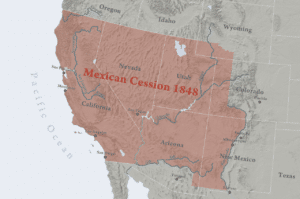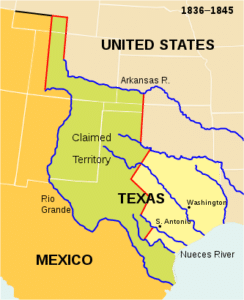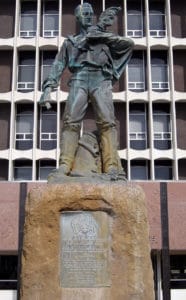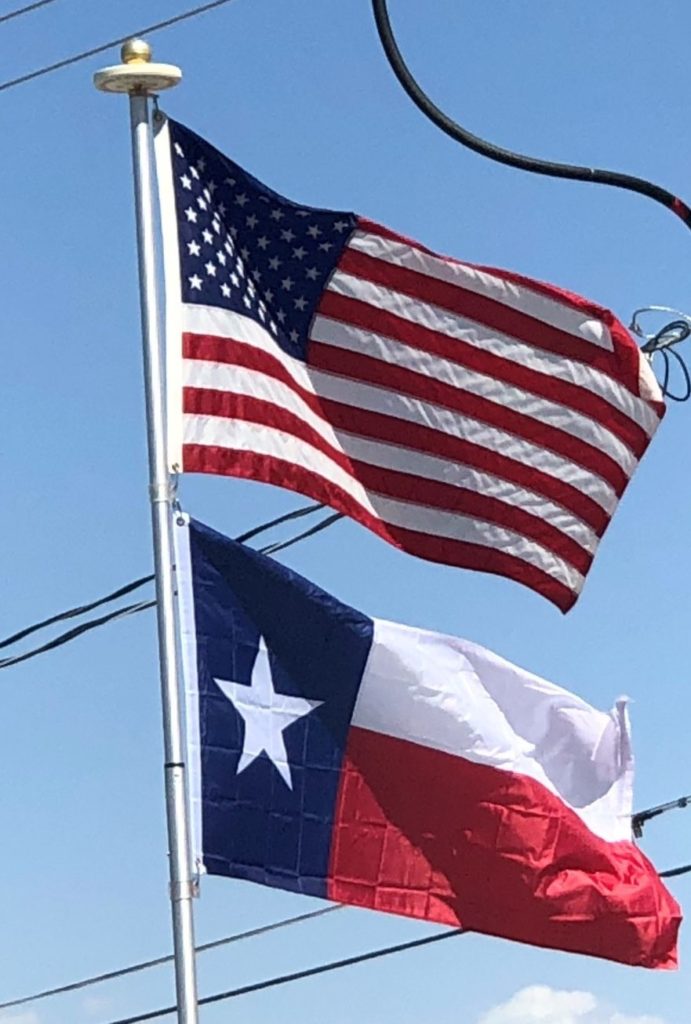After a series of United States victories, the Treaty of Guadalupe Hidalgo ended the two-year war. In return, for US$18,250,000, Mexico gave the U.S. undisputed control of Texas, ceded the Mexican Cession in 1848, most of which today is called the American Southwest, and Texas’s borders were established at the Rio Grande.

The Compromise of 1850 set Texas’s boundaries at their present form. U.S. Senator James Pearce of Maryland drafted the final proposal where Texas ceded its claims to land which later became half of present-day New Mexico, a third of Colorado, and small portions of Kansas, Oklahoma, and Wyoming, to the federal government, in return for the assumption of $10 million of the old republic’s debt. Post-war Texas grew rapidly as migrants poured into the cotton lands of the state.

Civil War and Reconstruction (1860–1900):
Texas was at war again after the election of 1860. A State Convention considering secession opened in Austin on January 28, 1861. On February 1, by a vote of 166–8, the Convention adopted an Ordinance of Secession from the United States. Texas voters approved this Ordinance on February 23, 1861. Texas joined the newly created Confederate States of America on March 4, 1861 ratifying the permanent C.S. Constitution on March 23.
Not all Texans favored secession initially, although many of the same would later support the Southern cause. Texas’s most notable Unionist was the state Governor, Sam Houston. Not wanting to aggravate the situation, Houston refused two offers from President Lincoln for Union troops to keep him in office. After refusing to swear an oath of allegiance to the Confederacy, Houston was deposed as governor.
While far from the major battlefields of the American Civil War, Texas contributed large numbers of men and equipment to the rest of the Confederacy.

Texas descended into anarchy for two months between the surrender of the Army of Northern Virginia and the assumption of authority by Union General Gordon Granger. Violence marked the early months of Reconstruction. Despite not meeting reconstruction requirements, Congress resumed allowing elected Texas representatives into the federal government in 1870. Social volatility continued as the state struggled with agricultural depression and labor issues.
Like most of the South, the Texas economy was devastated by the War. However, since the state had not been as dependent on slaves as other parts of the South it was able to recover more quickly. The culture in Texas during the later 19th century exhibited many facets of a frontier territory. The state became notorious as a haven for people from other parts of the country who wanted to escape debt, criminal prosecution, or other problems. Indeed, “Gone to Texas” was a common expression for those fleeing the law in other states. Nevertheless, the state also attracted many businessmen and other settlers with more legitimate interests as well.
The cattle industry continued to thrive though it gradually became less profitable. Cotton and lumber became major industries creating new economic booms in various regions of the state. Railroad networks grew rapidly as did the port at Galveston as commerce between Texas and the rest of the U.S., and the rest of the world, expanded. As with some other states before, the lumber industry quickly decimated the forests of Texas such that by the early 20th century the majority of the forest population in Texas was gone.
Earlier 20th Century:
In 1900, Texas suffered the deadliest natural disaster in U.S. history during the Galveston hurricane in which between 6,000 and 12,000 people lost their lives. On January 10, 1901, the first major oil well in Texas, Spindletop, was found south of Beaumont. Other fields were later discovered nearby in East Texas, West Texas, and under the Gulf of Mexico. The resulting “oil boom” transformed Texas. Oil production eventually averaged three million barrels per day at its peak in 1972.
